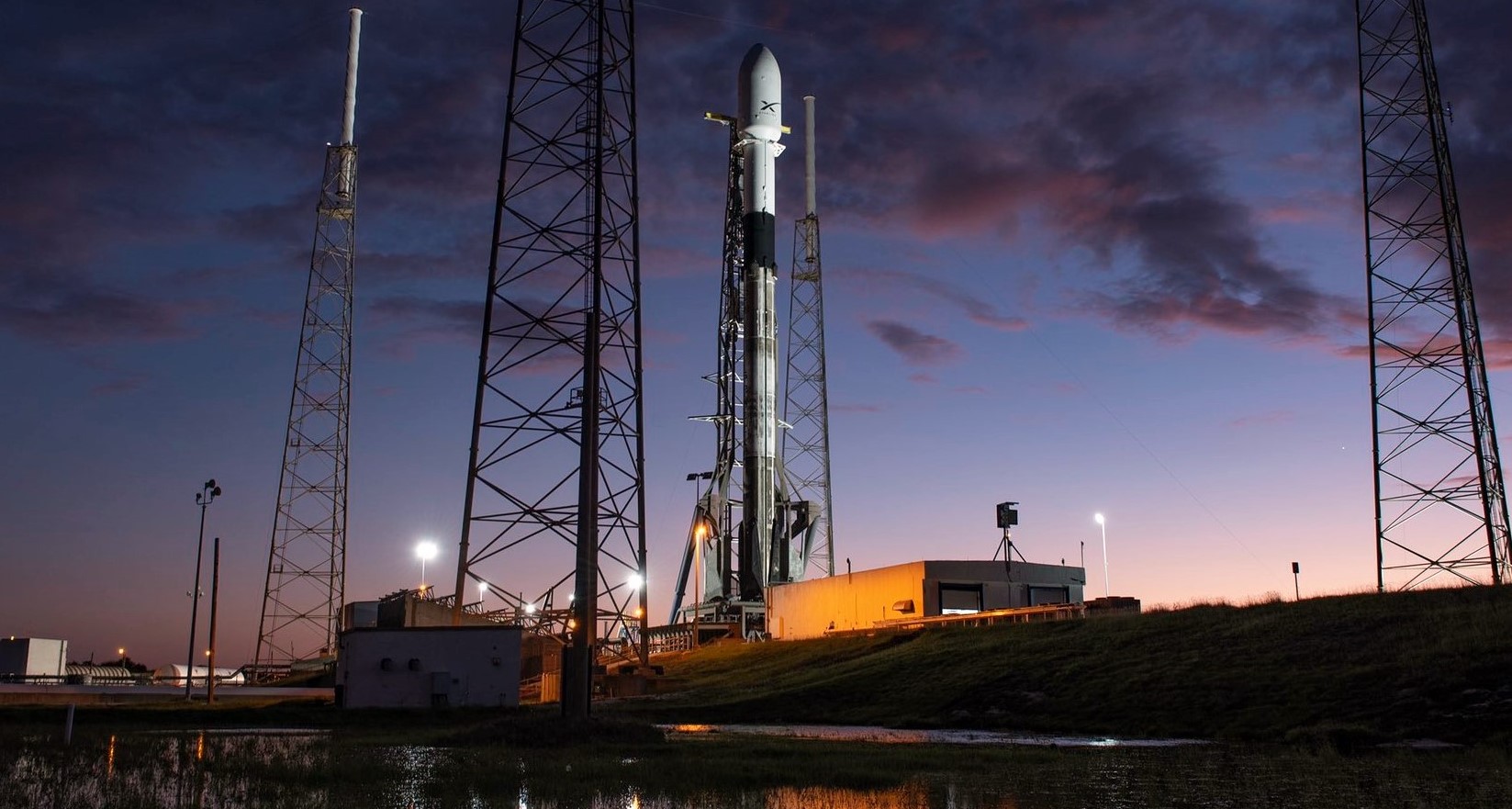
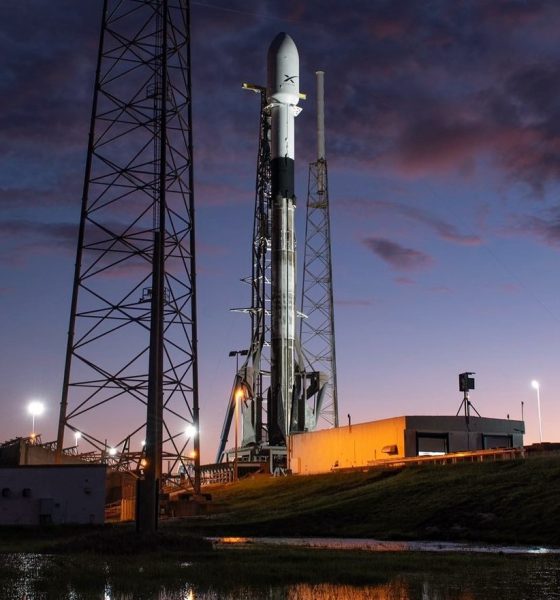
News
SpaceX Falcon 9 Starlink launch eyes two reusability milestones as new satellite details emerge
SpaceX is set for Falcon 9’s first orbital launch in more than three months. Known as Starlink-1, the mission will launch the company’s heaviest satellite payload ever and feature an impressive array of Falcon 9 booster and fairing reusability milestones.
Flatsat stack
Prior to Falcon 9 going vertical on the launch pad, SpaceX technicians had to construct and encapsulate a massive stack of 60 Starlink satellites, each weighing more than 260 kg (570 lb) apiece. This is the second time SpaceX has launched sixty of the advanced spacecraft, although the satellites that will launch on Starlink-1 feature a number of upgrades and refinements not present on the Starlink v0.9 satellites that launched in May 2019.
Without an identical angle from the Starlink v0.9 mission to compare against, it’s difficult to immediately point out visual differences between v0.9 and v1.0 spacecraft. Still, there are some clear general changes. Most notably, SpaceX appears to have dramatically reduced the area of shiny, metallic surfaces. Additionally, the small downward-facing dishes just left of center in the above image were not obviously present on Starlink v0.9 satellites or SpaceX’s official renders.
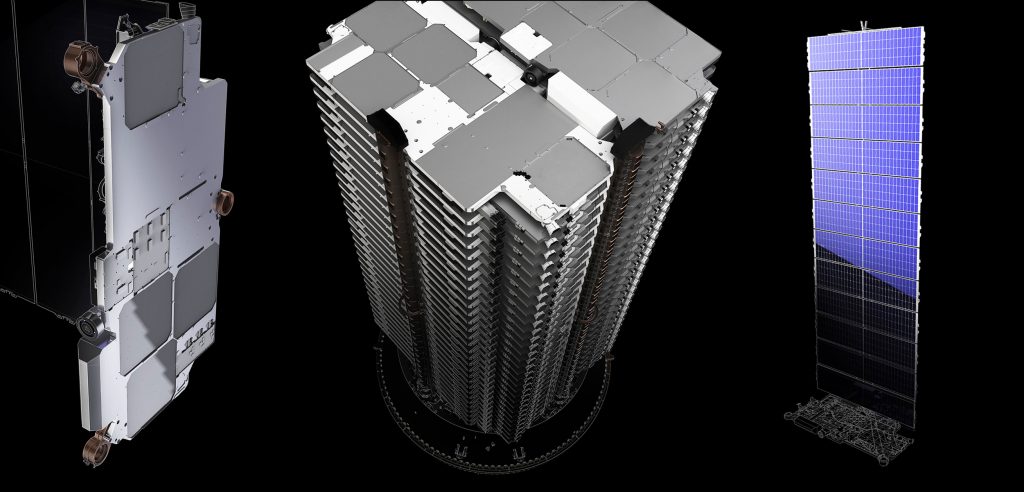

Those new dishes could be traditional dish antennas meant to serve as a more basic telemetry, tracking, and command (TTC) communications link for ground controllers. They could even be a prototype of Starlink’s planned inter-satellite laser data links. Regardless, it’s obvious that SpaceX is continuing its preferred cycle of rapid prototyping, flight-testing, and data-based refinement with Starlink.
SpaceX is also focused on dramatically lowering the albedo (reflectivity) of Starlink satellites and working closely with the astronomy and astrophysics communities to minimize any disruption the spacecraft might cause for scientific observations of the night sky. For any part that will be ground-facing during routine operations, this likely involves replacing shiny surfaces with matte finishes and adding dark or non-reflective coatings/insulation where possible, among other potential tweaks.
The more milestones, the merrier
Beyond the many apparent satellite upgrades Starlink-1 is set to debut, the mission will also mark no less than three (or possibly even four) reusability milestones. Falcon 9 booster B1048 has been selected by SpaceX to support Starlink-1 and has already completed three successful orbital-class missions since it debuted in July 2018. Assuming all goes well, B1048 will thus become the first SpaceX booster to launch (and land) four times, an excellent – if increasingly unsurprising – step forward for Falcon 9’s Block 5 upgrade. Falcon 9 B1048 will attempt its fourth landing – this time on drone ship Of Course I Still Love You (OCISLY) – shortly after launch.
Designed to enable up to 10 reuses of each Falcon booster, the successful completion of Starlink-1 will place Block 5 just one reuse away from the halfway point to proving its 10-reuse design. While Block 5 has yet to materialize any tangible improvements in booster turnaround time, an imminent ramp in Starlink launch cadence will hopefully give SpaceX plenty of opportunities to start making progress on that front.
Starlink-1 is also set to mark the inaugural launch of a flight-proven Falcon 9 fairing, essentially putting a bow on the bulk of SpaceX’s challenging fairing recovery and reusability development. Unintuitively, Starlink-1’s fairing previously supported Falcon Heavy Block 5’s April 209 launch debut, meaning that both halves traveled both faster and higher than any halves that previously attempted recovery.
Simultaneously, both halves splashed down in the Atlantic Ocean with no attempt to catch them, meaning that SpaceX has apparently successfully refurbished the fairings despite the fact that their recovery was more or less the worst-case scenario.
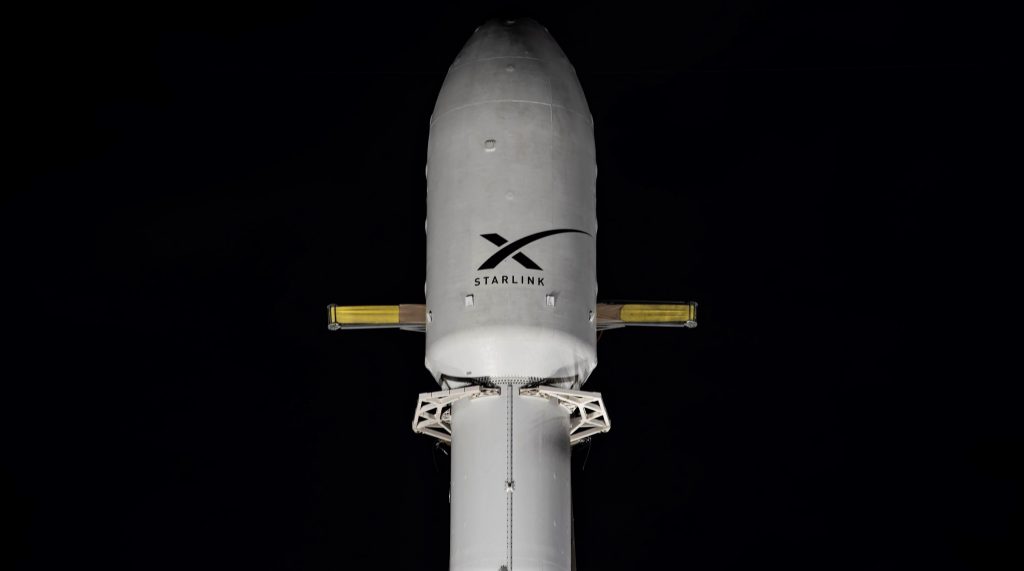
Last but not least, Starlink-1 will also mark the first time SpaceX’s just-finished fairing recovery ship GO Ms. Chief attempts to catch a Falcon 9 fairing, as well as the first time two fairing recovery ships – Ms. Tree & Ms. Chief – attempt to catch both halves of a Falcon fairing after launch. The twin recovery vessels departed Port Canaveral, Florida a few days ago and arrived at their recovery point ~750 km (460 mi) downrange on November 10th.
Finally, thanks to the fact that Falcon 9’s fairing is flight-proven, Starlink-1 will additionally feature the first attempted recovery (catch or splashdown) of a flight-proven Falcon fairing. SpaceX could scarcely fit in another milestone if it wanted to go out of its way to do so.
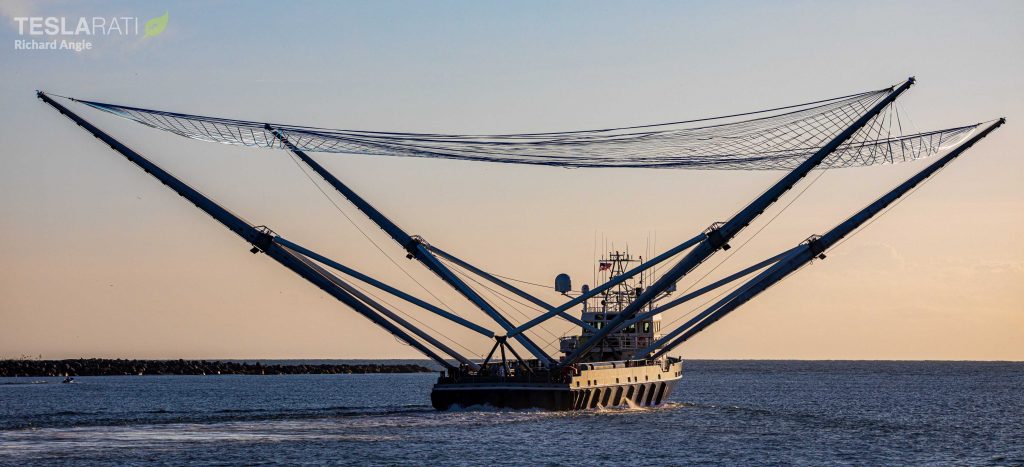
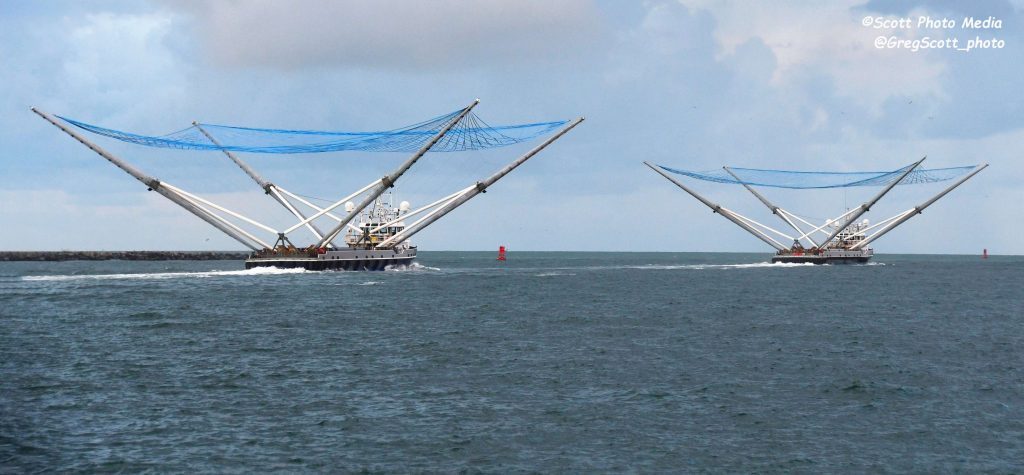
Falcon 9 is scheduled to lift off no earlier than 9:56 am ET (14:56 UTC), November 11th. Weather is 80% GO and SpaceX has a backup launch window around the same time on November 12th with a 70%-favorable weather forecast.
Check out Teslarati’s Marketplace! We offer Tesla accessories, including for the Tesla Cybertruck and Tesla Model 3.

Elon Musk
Elon Musk’s X will start using a Tesla-like software update strategy
The initiative seems designed to accelerate updates to the social media platform, while maintaining maximum transparency.

Elon Musk’s social media platform X will adopt a Tesla-esque approach to software updates for its algorithm.
The initiative seems designed to accelerate updates to the social media platform, while maintaining maximum transparency.
X’s updates to its updates
As per Musk in a post on X, the social media company will be making a new algorithm to determine what organic and advertising posts are recommended to users. These updates would then be repeated every four weeks.
“We will make the new 𝕏 algorithm, including all code used to determine what organic and advertising posts are recommended to users, open source in 7 days. This will be repeated every 4 weeks, with comprehensive developer notes, to help you understand what changed,” Musk wrote in his post.
The initiative somewhat mirrors Tesla’s over-the-air update model, where vehicle software is regularly refined and pushed to users with detailed release notes. This should allow users to better understand the details of X’s every update and foster a healthy feedback loop for the social media platform.
xAI and X
X, formerly Twitter, has been acquired by Elon Musk’s artificial intelligence startup, xAI last year. Since then, xAI has seen a rapid rise in valuation. Following the company’s the company’s upsized $20 billion Series E funding round, estimates now suggest that xAI is worth tens about $230 to $235 billion. That’s several times larger than Tesla when Elon Musk received his controversial 2018 CEO Performance Award.
As per xAI, the Series E funding round attracted a diverse group of investors, including Valor Equity Partners, Stepstone Group, Fidelity Management & Research Company, Qatar Investment Authority, MGX, and Baron Capital Group, among others. Strategic partners NVIDIA and Cisco Investments also continued support for building the world’s largest GPU clusters.
News
Tesla FSD Supervised wins MotorTrend’s Best Driver Assistance Award
The decision marks a notable reversal for the publication from prior years, with judges citing major real-world improvements that pushed Tesla’s latest FSD software ahead of every competing ADAS system.

Tesla’s Full Self-Driving (Supervised) system has been named the best driver-assistance technology on the market, earning top honors at the 2026 MotorTrend Best Tech Awards.
The decision marks a notable reversal for the publication from prior years, with judges citing major real-world improvements that pushed Tesla’s latest FSD software ahead of every competing ADAS system. And it wasn’t even close.
MotorTrend reverses course
MotorTrend awarded Tesla FSD (Supervised) its 2026 Best Tech Driver Assistance title after extensive testing of the latest v14 software. The publication acknowledged that it had previously criticized earlier versions of FSD for erratic behavior and near-miss incidents, ultimately favoring rivals such as GM’s Super Cruise in earlier evaluations.
According to MotorTrend, the newest iteration of FSD resolved many of those shortcomings. Testers said v14 showed far smoother behavior in complex urban scenarios, including unprotected left turns, traffic circles, emergency vehicles, and dense city streets. While the system still requires constant driver supervision, judges concluded that no other advanced driver-assistance system currently matches its breadth of capability.
Unlike rival systems that rely on combinations of cameras, radar, lidar, and mapped highways, Tesla’s FSD operates using a camera-only approach and is capable of driving on city streets, rural roads, and freeways. MotorTrend stated that pure utility, the ability to handle nearly all road types, ultimately separated FSD from competitors like Ford BlueCruise, GM Super Cruise, and BMW’s Highway Assistant.
High cost and high capability
MotorTrend also addressed FSD’s pricing, which remains significantly higher than rival systems. Tesla currently charges $8,000 for a one-time purchase or $99 per month for a subscription, compared with far lower upfront and subscription costs from other automakers. The publication noted that the premium is justified given FSD’s unmatched scope and continuous software evolution.
Safety remained a central focus of the evaluation. While testers reported collision-free operation over thousands of miles, they noted ongoing concerns around FSD’s configurable driving modes, including options that allow aggressive driving and speeds beyond posted limits. MotorTrend emphasized that, like all Level 2 systems, FSD still depends on a fully attentive human driver at all times.
Despite those caveats, the publication concluded that Tesla’s rapid software progress fundamentally reshaped the competitive landscape. For drivers seeking the most capable hands-on driver-assistance system available today, MotorTrend concluded Tesla FSD (Supervised) now stands alone at the top.
News
Elon Musk’s Grokipedia surges to 5.6M articles, almost 79% of English Wikipedia
The explosive growth marks a major milestone for the AI-powered online encyclopedia, which was launched by Elon Musk’s xAI just months ago.

Elon Musk’s Grokipedia has grown to an impressive 5,615,201 articles as of today, closing in on 79% of the English Wikipedia’s current total of 7,119,376 articles.
The explosive growth marks a major milestone for the AI-powered online encyclopedia, which was launched by Elon Musk’s xAI just months ago. Needless to say, it would only be a matter of time before Grokipedia exceeds English Wikipedia in sheer volume.
Grokipedia’s rapid growth
xAI’s vision for Grokipedia emphasizes neutrality, while Grok’s reasoning capabilities allow for fast drafting and fact-checking. When Elon Musk announced the initiative in late September 2025, he noted that Grokipedia would be an improvement to Wikipedia because it would be designed to avoid bias.
At the time, Musk noted that Grokipedia “is a necessary step towards the xAI goal of understanding the Universe.”
Grokipedia was launched in late October, and while xAI was careful to list it only as Version 0.1 at the time, the online encyclopedia immediately earned praise. Wikipedia co-founder Larry Sanger highlighted the project’s innovative approach, noting how it leverages AI to fill knowledge gaps and enable rapid updates. Netizens also observed how Grokipedia tends to present articles in a more objective manner compared to Wikipedia, which is edited by humans.
Elon Musk’s ambitious plans
With 5,615,201 total articles, Grokipedia has now grown to almost 79% of English Wikipedia’s article base. This is incredibly quick, though Grokipedia remains text-only for now. xAI, for its part, has now updated the online encyclopedia’s iteration to v0.2.
Elon Musk has shared bold ideas for Grokipedia, including sending a record of the entire knowledge base to space as part of xAI’s mission to preserve and expand human understanding. At some point, Musk stated that Grokipedia will be renamed to Encyclopedia Galactica, and it will be sent to the cosmos.
“When Grokipedia is good enough (long way to go), we will change the name to Encyclopedia Galactica. It will be an open source distillation of all knowledge, including audio, images and video. Join xAI to help build the sci-fi version of the Library of Alexandria!” Musk wrote, adding in a later post that “Copies will be etched in stone and sent to the Moon, Mars and beyond. This time, it will not be lost.”








